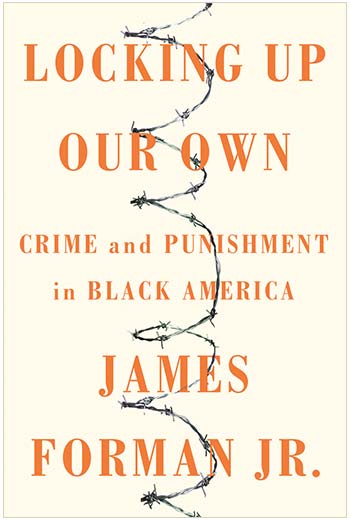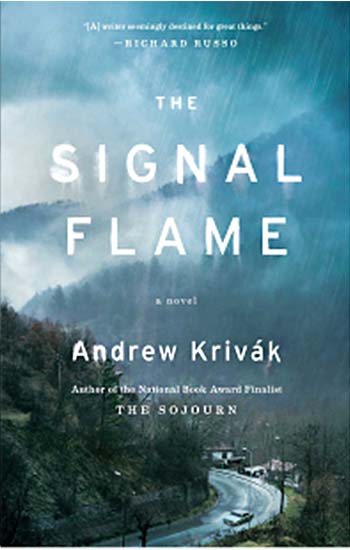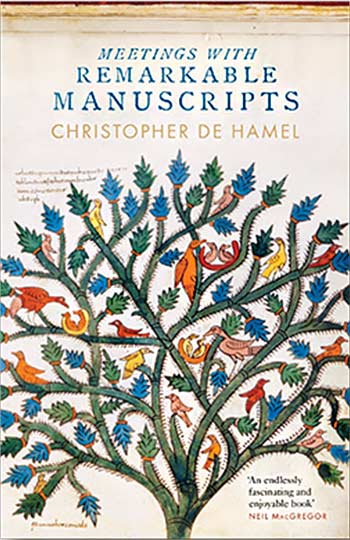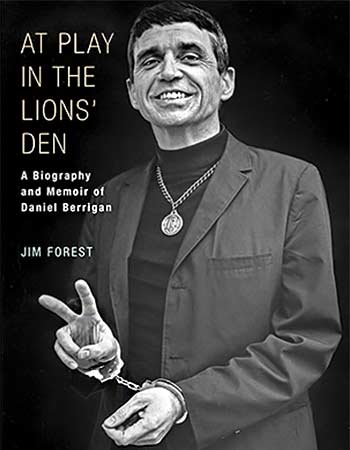Subtotal: $
Checkout-

Definition of a Good Farmer
-

The Naturalist’s Journal: Sightings
-

Gerrard Winstanley
-

Words that Got Martin Luther King Jr. Shot
-

Justice and the Old Testament Prophets
-

The Prophet We Need Now
-

Readers Respond: Issue 16
-

Family and Friends
-

Everyone Should Serve
-

A Child Named Problem
-

Were You There?
-

Dangerous Unselfishness
-

Redeeming the Soul of America
-

Powers and Principalities
-

The Casualties of War
-

For the Love of Neighbor
-

Two Friends, Two Prophets
-

Liberation at the Cross
-

Poem: Gaza Is Not Far Away
-

Staying Rooted and Unbalanced
-

Defending Purity
-

Robert Frost’s “Birches”

Next Article:
Explore Other Articles:
Locking Up Our Own
James Forman Jr.
(Farrar, Straus and Giroux)

Locking Up Our Own: Crime and Punishment in Black America by James Forman Jr.
Mass incarceration, particularly of young black males, is now front and center of the struggle for racial justice and civil rights, thanks in part to Michelle Alexander’s 2010 book, The New Jim Crow. Forman, a Yale Law School professor, adds nuance to our understanding of why the US prison population has grown fivefold over the last four decades, with 2.3 million incarcerated today. He doesn’t deny the role of racism, but shows how black leaders and citizens, faced with an explosion of crime in their communities during the crack epidemic, also came to support aggressive policing and harsh sentencing.
As a public defender in Washington, DC, Forman often found himself in courtrooms where not only was the defendant black; the victim, judge, prosecutor, defense attorney, court reporter, and bailiff were as well. So were the policeman who made the arrest, the city councilors who wrote the laws, the police chief, the mayor, and the prison guards. Forman particularly came to hate judges’ “Martin Luther King speech” to young offenders before sending them off to prison: “Dr. King didn’t march and die so that … you could be out on the street, getting high, carrying a gun, and robbing people.”
It’s the personal stories that stay with you. A young woman, one of the few in her neighborhood to secure a decent job, is arrested for possession of marijuana after being pulled over in a traffic stop. Though the charges are dropped, she is fired and unable to find work because of her arrest record. In a more hopeful example, the only thing that saves a (poor, black) juvenile from a life in the criminal justice system after an armed robbery is his (poor, black) victim’s willingness to forgive him and support his bid for a second chance in a vocational program.
A final chapter offers a word of caution: would-be reformers of the US criminal justice system have often invoked a convenient distinction between “nonviolent drug offenders” (deemed worthy of leniency) and everyone else in prison (“violent criminals” who “belong in cages”). Yet nonviolent drug offenders only make up 10 percent of the prison population. Even if all were released tomorrow, the horror of mass incarceration would still be with us. What might a justice system look like that rehabilitates as effectively as it now punishes, and that leaves room for mercy?
The Signal Flame
Andrew Krivák
(Scribner)

The Signal Flame by Andrew Krivák
Every generation has its war. And every war casts a long shadow back home in the mountains of Pennsylvania.
Two absent characters make their presence felt throughout this novel: recently buried family patriarch Josef Vinich, and young Sam Konar, last seen in Vietnam. Those left to carry on have more than their share of loss. It’s no surprise they struggle with a God who, like the author, seems to create beautiful characters only to kill them off in the next chapter, or worse, leave them missing in action, their loved ones suspended between hope and grief.
The rains fall equally on deserving and undeserving, and as the waters keep rising, one wonders if the gray will ever lift. But it does. And those left standing find healing together, thanks to another invisible actor that Krivák would probably call grace – the only force that can make two feuding families one.
The book is steeped in biblical metaphor, but rendered as naturally as his understated depictions of wooded ridges and trout streams, sawmills and well-built homes. To find a new literary writer who knows how faith shapes the stories of our lives and times is downright refreshing.
Meetings with Remarkable Manuscripts
Christopher de Hamel
(Penguin)

Meetings with Remarkable Manuscripts by Christopher de Hamel
Readers who appreciate a well-designed book will love this one, which unravels the stories behind some of history’s most valuable documents. The handsome volume, which has won the Wolfson History Prize and the Duff Cooper Prize, is a work of art in its own right, with over 200 full-color illustrations in a 640-page hardcover.
A Cambridge historian and former Sotheby’s expert, de Hamel is a qualified guide. His entertaining and informative introduction to twelve manuscripts created between the sixth and sixteenth centuries opens a window into the medieval world. He also takes the reader along on his travels to “meet” each manuscript, offering running commentary of his experiences in today’s high-stakes world of rare books.
Few might think this topic thrilling or news- worthy, but passion is contagious. Shortly after the release of this book, de Hamel announced he had discovered Thomas Becket’s own copy of the Psalms, which he may well have been holding when he was martyred in Canterbury Cathedral back in 1170. In other news, Italy has agreed to loan the Codex Amiatinus – an illuminated Bible, 2,080 pages long and the oldest surviving copy of the Vulgate – back to Britain 1,302 years after it left English shores.
At Play in the Lions’ Den
Jim Forest
(Orbis)

At Play in the Lions Den by Jim Forest
Amid the wealth of biographies published lately, you’ll be hard pressed to find another as spirited as Forest’s intimate look at the life and faith of his friend Daniel Berrigan (1921–2016) and a colorful cast of friends and associates that includes Thomas Merton, Dorothy Day, Thich Nhat Hanh, Martin Luther King Jr., Ernesto Cardenal, and Martin Sheen.
Celebrated as a rebel priest, poet, activist, and teacher, Berrigan was famous enough in his day to make the cover of Time. But even his own religious community didn’t always appreciate him. And the strength of his personal beliefs was tested not only by stints in prison for civil disobedience but also by the zeitgeist. Fun-loving and generous he may have been, but he also took confession – and forgiveness – of sins seriously. He never wavered in his views that a vow made before God ought to be upheld, that violence can never be redemptive, and that every life is sacred.
Packed with vivid anecdotes, photographs, and quotes from Berrigan’s many books, Forest’s profile aptly illustrates why his fascinating subject chose the following epitaph for his gravestone: “It was never dull. Alleluia!”
Already a subscriber? Sign in
Try 3 months of unlimited access. Start your FREE TRIAL today. Cancel anytime.
































